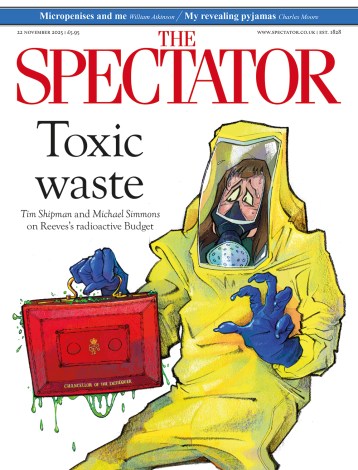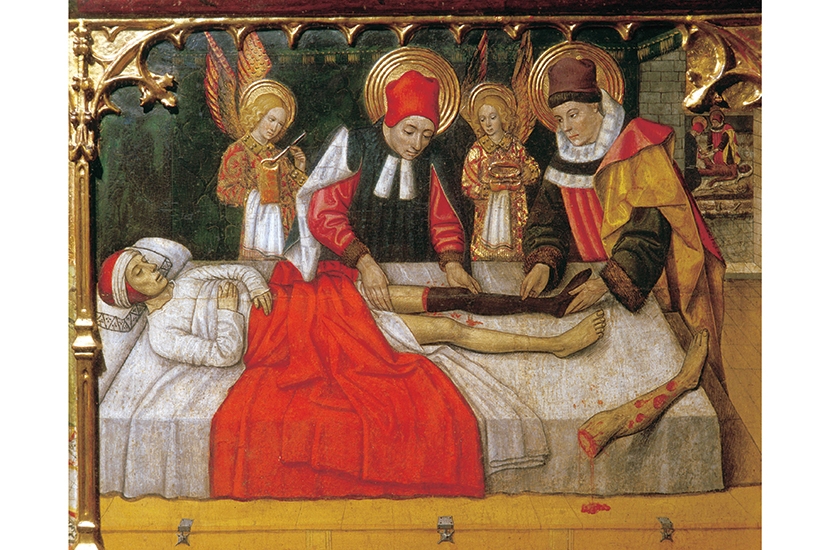On watching transplant surgery, I can give prosaic but essential advice: have a good breakfast. Each operation can last 12 hours, and you’re unlikely to get a seat. Relocating a liver that was recently inside someone else is a feat of preparation, choreography and collaboration (with the patient too, who must agree to alcoholic abstinence). However, transplants can also be organised in minutes. Every day, thousands of units of red cells are requested from NHS blood banks and delivered through IV drips with little ceremony. What then actually is a transplant, which moves ‘life itself… from one man’s body into another’s’? Spare Parts edges up against this question, revealing our hopes of both restoration and enhancement.
The evolution of transplantation is a history of false starts. ‘Surgeons almost certainly performed rudimentary skin grafts for millennia,’ writes Paul Craddock, but the official story opens in Renaissance Italy with nose jobs. Whether lost to syphilis or a sword, noses could be re-fashioned from a skin flap taken from the forearm, which would then be strapped to the face for several weeks until both parts healed together. The technique never really took off. We jump next to Paris in the 1660s, where the surgeon Jean-Baptiste Denys performed a live canine blood transfusion on the Pont Neuf. His daring escalated to cross-species infusions using cows, horses and goats.
The first dialysis machine was made from sausage skin, a bathtub and parts of a shot-down German aircraft
Humans were next. Could transfusions from animals correct pathology and even psychology? Blood from lambs, chosen for their ‘innocence’, was recommended as a potential cure for ‘some mad person in the hospital of Bethlem’. While transfusion experiments petered out due to problems of clotting and what we know now as blood-group incompatibility, a new breed of dentists were touting cosmetic transplants. They would take healthy teeth from poor children and re-root them in the mouths of the rich and decayed. It would be nearly two centuries later that the first human organ transplant became possible, when Ronald Herrick gave a kidney to his identical twin, Richard, in 1954. In 1967, medicine’s answer to the space race was finally won: a heart transplant. That the patient died of pneumonia two weeks later only slightly tarnished Christiaan Barnard’s surgical victory.
The charm and value of Spare Parts comes from situating these landmarks in a wider history of ideas. The divided disciplines of surgery and medicine had to be brought together by visionary practitioners who ‘preached that doctors could learn more from people than they could from books’. Barber surgeons drew on horticultural knowledge about plant grafting to think about skin. Practical skills were refined by learning ‘thread management’ from seamstresses. Transplantation breakthroughs rested on Harvey’s discovery of the heart as a blood pump, on anaesthesia, immunology, and antisepsis (although not always successfully interpreted: on discovering urine’s antiseptic properties, the 16th-century Italian surgeon Leonardo Fioravanti ‘requested his assistants and spectators to unfasten their trousers and relieve themselves in the patient’s open abdomen’). Philosophical currents were necessary too. Descartes’s reimagining of the body as a sum of parts inspired attempts to connect people ‘as if they were coupling machines’. Gadgets were then conceived as intermediary selves, such as the first dialysis contraption which was made from sausage skin, a bathtub and parts from a shot-down German aircraft.
Craddock stresses that this history is not a steady march of progress. Enlightenment ideas did not neatly supplant Galenic humoral medicine. Vitalist theories resisted mechanical simplification. Transplantation also awoke doctors’ anxiety about tampering with God’s work, and ‘breaching the previously unbroken barrier between two bodies’. I only wish Craddock had discussed the intertwined history of prosthesis, and how non-human adjuncts compete with flesh and blood.
Spare Parts takes pains to keep the donors in view. The contributions of these silent figures have traditionally been considered worthless because they were existential rather than intellectual. Which left me wondering whether this really is the ‘surprising history’ Craddock’s subtitle claims. Medicine’s past is strewn with people considered expendable by the establishment. One of the first heart transplant operations used the harvested organs of Bruce Tucker, a working-class 56-year-old, part of the ‘faceless black masses of society’. His death was hastened by clinicians who turned off his life support in order to get their operation underway.
Giving and receiving body parts has fuelled black markets and stoked eugenic sentiments, while ‘pioneers’ have wanted to establish their own reputations at all costs. Regulations and ethical standards have been necessarily tightened, but Spare Parts reminds us, to borrow the words of T.S. Eliot, not only of ‘the pastness of the past, but of its presence’. Bodies remain commodities, and the most vulnerable across the world are often sold cheap. We can only hope that the future predicted by Craddock, of 3D-printed organs and visceral cells derived from plants, might end this exploitation and give us body parts that can be truly spared.






Comments